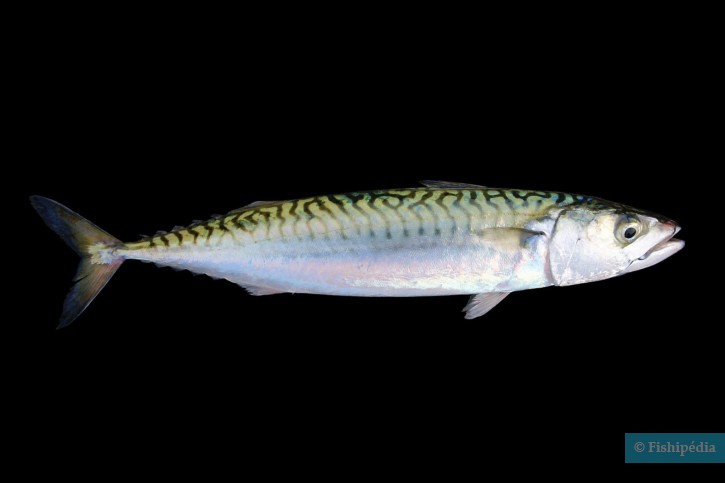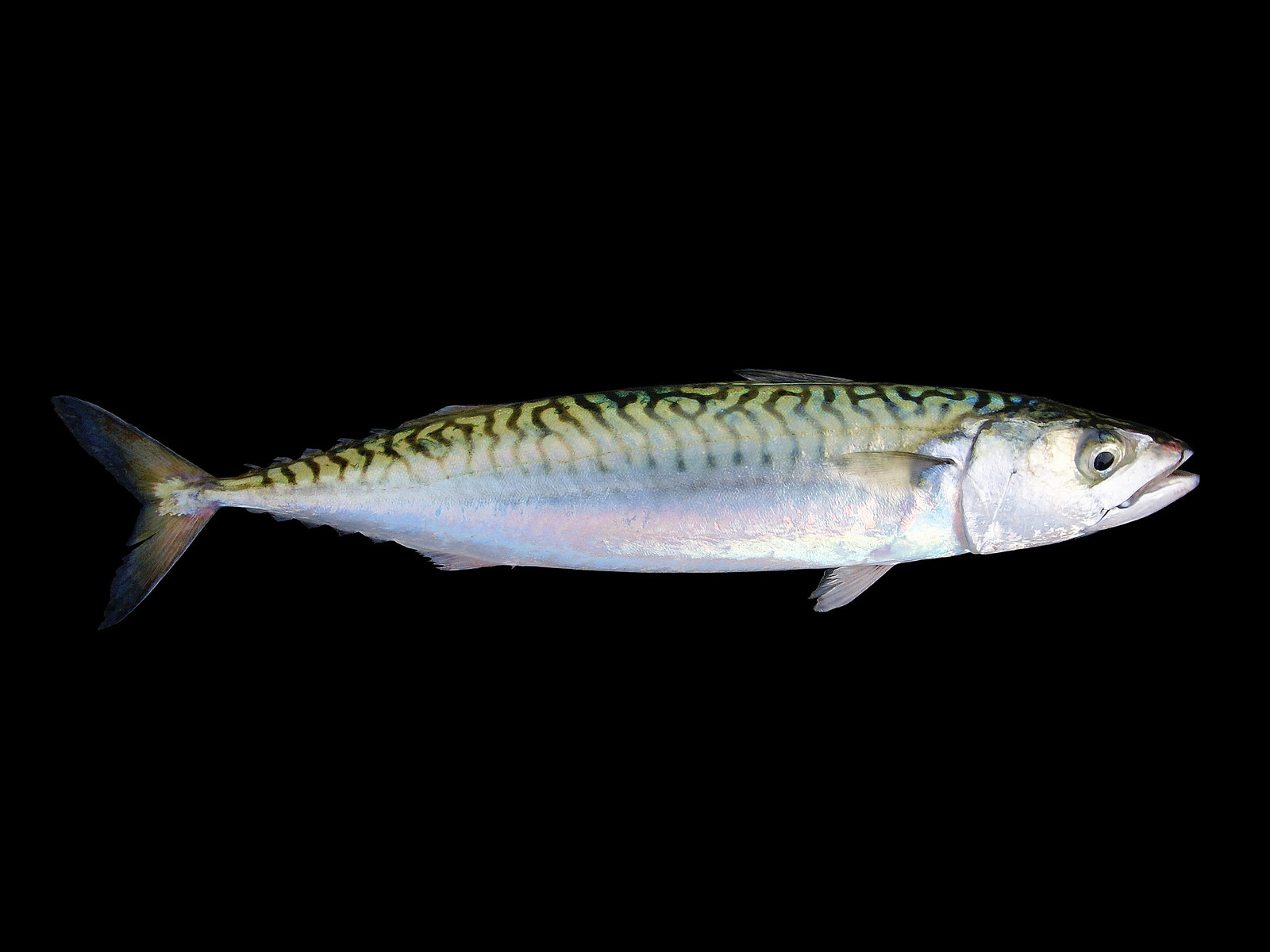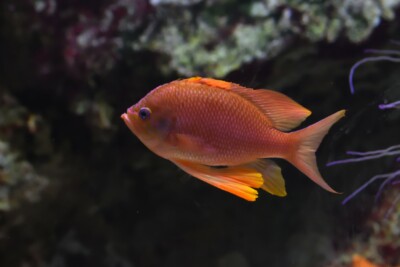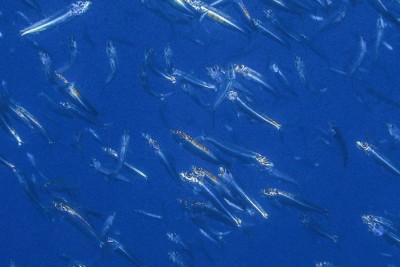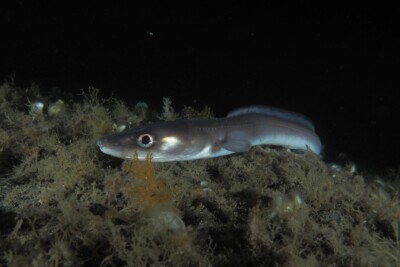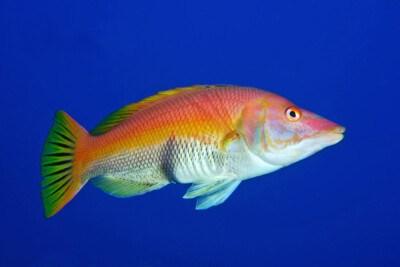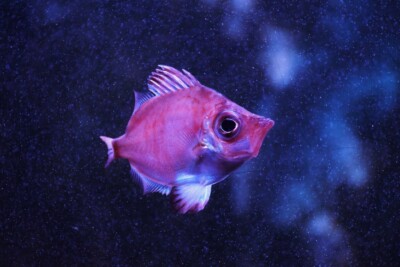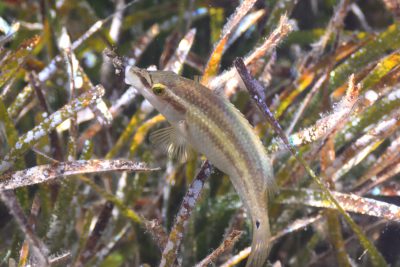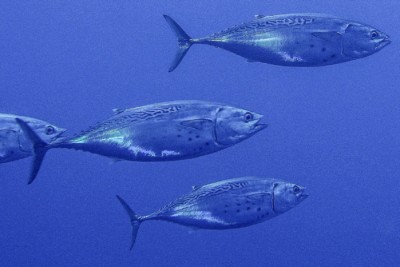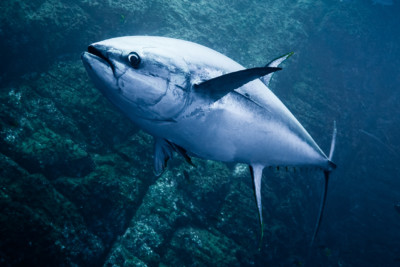Introduction
Scomber scombrus, commonly known as Atlantic mackerel, is an emblematic fish of European coasts. It is abundant in the Mediterranean Sea and the Atlantic Ocean, where it is found from the British Isles to North Africa. It also frequents the Eastern Atlantic, from the United States to Canada.
During the winter, it resides in deep waters at around 200 meters, but with the arrival of warmer months, it forms large schools of individuals of similar size and moves closer to the surface not far from the shores.
It is the target of intense semi-industrial, artisanal, and sport fishing. It has been protected by the European Union since 1996. Any catch of individuals under 18 cm is prohibited.
Atlantic mackerel is highly appreciated for its flesh and nutritional properties, rich in omega-3 fatty acids. It is mainly consumed canned in warm countries, either in natural form or in vegetable oil. However, larger pieces are also used in other types of recipes.
Who is it?
Morphology
-
Average size30 cm
-
Maximum size60 cm
-
Patternvertical stripes
-
Average size30 cm
-
Maximum size60 cm
-
Patternvertical stripes
How to recognize This fish ?
The Atlantic mackerel has a slender, elongated body, with two separate dorsal fins, short pectoral fins, and an anal fin followed by several small fins. The body is covered with small scales. Those located at the back of the head and those covering the pectoral fins are larger.
Unlike many fish, it does not have a swim bladder.
It has a pointed snout with a large mouth. The lower jaw is slightly forward compared to the upper jaw. It has a single row of small teeth. The eyes are large and covered with a fleshy eyelid.
Atlantic mackerel typically measures around 30 cm (some individuals of 60 cm have been observed) and weighs about 250-300 g (some exceptionally large specimens approach 3 kg).
The body displays a bright bluish-green coloration with characteristic transverse black stripes that extend over the lateral area. The belly and the lower part of the flanks are white.
Sexual dimorphism
Females can reach a larger size.
Behaviour & Life cycle
-
dietcarnivorous
-
Sociabilityliving in shoals
-
territorialNo
-
Way of livingdiurnal
The Atlantic mackerel is mainly diurnal (active during the day), it is a fast fish that uses short movements of the rear part of its body and its caudal fin to move.
Its feeding habits are very varied. It feeds on plankton, crustaceans, and other small fish such as sardines and small herrings.
It is a migratory fish that forms large schools of individuals of the same size in spring. With the arrival of cold weather, they migrate south in search of warmer waters.
Reproduction
-
Reproductionovovivipare
-
Migratory speciesYes
Atlantic mackerel is an ovoviviparous fish. Spawning occurs in spring and summer, usually near the coast.
A single female can lay up to 450,000 eggs in a single spawning season. The eggs hatch in batches after about a week. They are pelagic and remain about 20 meters below the surface. The hatching time varies between 2 and 9 days, depending on the water temperature. Once hatched, the larvae are carried by currents.
Atlantic mackerel reaches sexual maturity between 1 and 2 years, with an approximate size of 22 to 35 cm depending on the populations. Some populations may be fished before sexual maturity, which can pose problems for the species' renewal.
Harmless species
This species does not represent any particular threats to humans when encountered in its natural environment.
Origin and distribution
Geographic distribution & Conservation
Atlantic mackerel abounds in the Mediterranean Sea and the Atlantic Ocean, where it is found from the British Isles to North Africa. It is also listed in the Black Sea.
Stock status and sustainable fishing with Ethic Ocean
The North-East Atlantic mackerel stock enjoys a significant, although declining, reproductive biomass (4,400,000 tons in 2019). The abundance of spawners increased sharply between 2003 and 2014. Since then, it has started to decrease but remains above the precautionary threshold of 2,500,000 tons... Learn moreConservation status of populations (IUCN)
What is its habitat?
Natural environment characteristics
-
Depth0 - 1000 m
-
EnvironmentActive pelagic
Biotope presentation
This species is normally found at a depth of 0 to 200 meters, although some individuals have been observed up to 1000 meters deep.
Atlantic mackerel inhabits open water areas and is not specific to any particular biotope. It is abundant in coastal areas during the warm months of spring and summer. Juveniles sometimes approach coastal ports and even frequent estuaries. In winter, they migrate to warmer southern waters.
Species of the same biotope
To go further
Sources & Contributions
Participation & Validation
The Fishipedia team and specialist contributors are committed to providing high-quality content. However, although the information comes from scientific sources or testimonials from specialists, the cards may contain inaccuracies.

Silvia Gomez

Benoit Chartrer

Julie Magnus
Translation
Translation done with the valuable contribution of our translators, who make this information available to a wider audience. We sincerely thank them for their commitment.
Scientific partners
Tags
Species of the same family
Species of the same biotope
